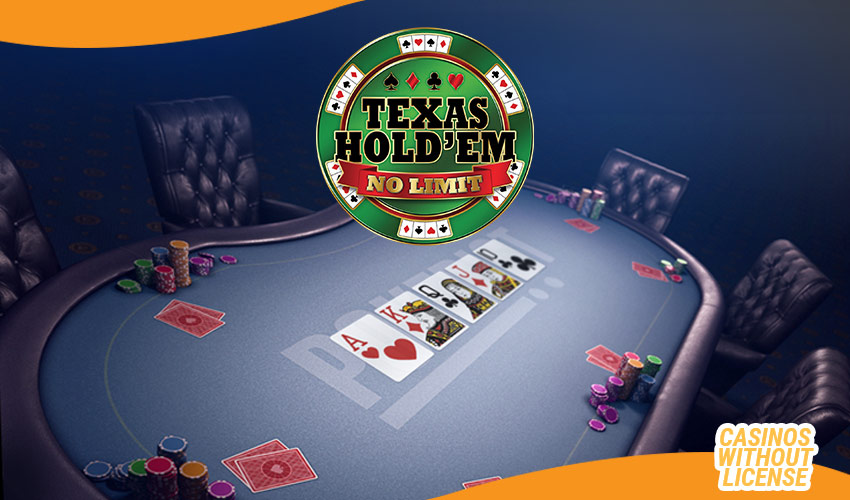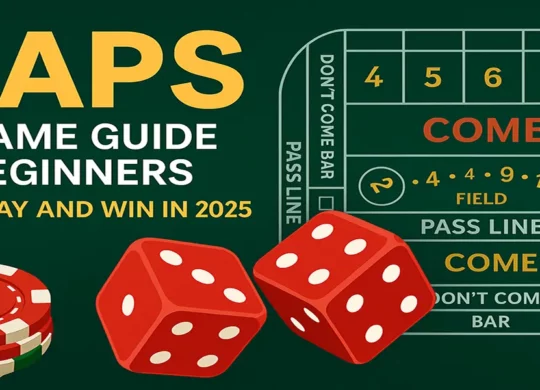What Is Texas Hold’em Poker?
Texas Hold’em is a community card poker game where players combine their two private “hole” cards with five community cards to make the best five-card hand. The game gained massive global popularity in the early 2000s during the “poker boom” and remains a staple in casinos and online platforms today.
Unlike other poker variants, Texas Hold’em is easy to learn but hard to master. The strategy, psychology, and betting dynamics make it a favorite for both recreational and professional players.
Texas Hold’em Rules Explained
Before you can develop a winning strategy, you need to fully understand the rules that govern Texas Hold’em. While the game is simple to learn, its structure includes multiple stages and player actions that can affect every hand. From how the cards are dealt to the sequence of betting rounds, knowing the flow of the game is essential. In the sections below, we’ll walk you through the core rules, table setup, and key actions every player should know—giving you a solid foundation to start playing confidently and making smart decisions.
Find poker in live casino: Top 5 gambling providers for live casino
Game Objective and Flow
The objective in Texas Hold’em is to win chips by either making the best hand or forcing your opponents to fold. The game is played in a clockwise direction and consists of the following stages:
- Pre-flop – Players receive two hole cards and make their first betting decisions.
- Flop – The dealer reveals the first three community cards.
- Turn – A fourth community card is dealt.
- River – The final community card is shown.
- Showdown – Players reveal hands if there’s still action after the river.
The best five-card hand wins the pot—unless all others have folded earlier.
The Cards and the Table

Each player gets two face-down hole cards. The dealer then deals five face-up community cards. A standard 52-card deck is used, and the “dealer button” moves clockwise each round, determining who posts the small blind and big blind.
Player Actions
Players can take several actions based on their cards and the betting:
- Fold – Discard your hand.
- Check – Pass action without betting.
- Call – Match the current bet.
- Raise – Increase the bet.
- All-in – Bet all your chips.
Texas Hold’em Hand Rankings (With Chart)
Here’s how hands rank from strongest to weakest:
| Rank | Hand | Example |
| 1 | Royal Flush | A♠ K♠ Q♠ J♠ 10♠ |
| 2 | Straight Flush | 9♦ 8♦ 7♦ 6♦ 5♦ |
| 3 | Four of a Kind | Q♣ Q♠ Q♦ Q♥ 2♠ |
| 4 | Full House | J♣ J♦ J♠ 6♣ 6♠ |
| 5 | Flush | A♣ 10♣ 8♣ 6♣ 4♣ |
| 6 | Straight | 10♦ 9♣ 8♠ 7♥ 6♣ |
| 7 | Three of a Kind | 5♣ 5♦ 5♠ K♦ 9♥ |
| 8 | Two Pair | 9♣ 9♠ 4♦ 4♣ J♠ |
| 9 | One Pair | A♠ A♦ 7♥ 3♣ 2♦ |
| 10 | High Card | K♠ J♣ 9♦ 6♣ 2♠ |
🧠 Tip: Always memorize hand rankings to avoid rookie mistakes.
Get to know the cards: Best poker hands in the game to win huge profits
How to Bet in Texas Hold’em
Betting is the heart of Texas Hold’em—and understanding how to bet correctly can make or break your game. Whether you’re playing online or live, each betting round presents a new opportunity to gain information, control the pot, or pressure opponents. Knowing when to bet, how much to bet, and why you’re betting is critical to long-term success. In the sections below, we break down the four betting rounds, explain key bet types, and help you understand the different betting structures used in both casual and professional poker environments.
The Four Betting Rounds
- Pre-Flop – After hole cards are dealt, players can fold, call, or raise based on their starting hand.
- Flop – After the first three community cards are revealed, another round of betting begins.
- Turn – A fourth card is added, and another round of betting follows.
- River – The final card is dealt and the last betting round takes place before the showdown.
Types of Bets
- Value Bet: You want a call from a worse hand.
- Bluff Bet: You want your opponent to fold.
- Continuation Bet (C-Bet): You bet after raising pre-flop to maintain control.
Betting Limits
- No-Limit: You can bet any amount at any time (most common online).
- Pot-Limit: You can bet up to the current size of the pot.
- Fixed-Limit: Betting amounts are predetermined and limited.
Mastering the Art of Bluffing

Bluffing is one of the most powerful—and misunderstood—skills in Texas Hold’em. Knowing when and how to bluff can turn a weak hand into a winning one, but poorly timed bluffs can quickly drain your stack. In today’s more analytical poker environment, successful bluffing requires strategy, timing, and reading your opponents. Whether you’re playing online or live, the tips below will help you bluff with confidence and purpose. Learn the key bluffing types, avoid common pitfalls, and discover how to make your bluffs truly believable.
When to Bluff
Bluffing works best when you’re in position and your opponent has shown weakness (e.g., checking on flop and turn). Timing is everything—bluff too often and you’ll get called down.
Types of Bluffing
- Semi-Bluff: You bluff with a drawing hand that might improve.
- Stone Cold Bluff: You have no chance to win unless the opponent folds.
- Continuation Bluff: Used after a strong pre-flop raise, regardless of the flop.
Common Bluffing Mistakes
- Bluffing too often.
- Bluffing multiple opponents at once.
- Failing to recognize strong hands or “calling stations.”
Texas Hold’em Strategy Tips for Beginners (2025 Edition)
Mastering Texas Hold’em starts with building solid fundamentals. As a beginner in 2025, you’re entering a highly competitive environment where smart, strategic play is more important than ever. Whether you’re playing at home, online, or on platforms without a Swedish license, these beginner-friendly tips will help you make better decisions, manage risk, and win more consistently.
From position play to bankroll discipline, each strategy outlined below is designed to sharpen your skills and set you apart from casual players right from your first hand. You can learn much about Texas Hold´em by looking at WSOP, or reading articles on the site.
Play Tight but Aggressive
Stick to premium hands pre-flop (A-A, K-K, Q-Q, A-K). When you play, play hard—raise instead of calling.
Understand Position and Pot Odds
Being “on the button” or in a late position allows you to act last, gaining vital info. Use pot odds to calculate if a call is profitable over time.
Know When to Fold
Don’t get emotionally attached to a decent hand. One pair or top pair isn’t always enough.
Bankroll Management
Always play within your limits. Use only 5–10% of your bankroll at one table to avoid going broke due to variance.
Playing Texas Hold’em Online Without a Swedish License

Swedish players looking to enjoy Texas Hold’em without the restrictions of Spelpaus are increasingly turning to international poker sites. These platforms offer more freedom, bigger bonuses, and often higher-quality poker experiences. However, it’s crucial to choose trustworthy sites that operate legally under reputable licenses. In the sections below, we explore why many Swedes prefer casinos without a Swedish license, how to identify safe and secure platforms, and what essential features to look for when selecting the best online poker room for your skill level and budget.
Also read: How much do online casino dealers make
Why Choose a Casino Without Spelpaus?
- No cooling-off restrictions (Spelpaus).
- Larger bonuses and rakeback.
- Higher player traffic and tournament variety.
Safe & Legit Options for Swedes
Look for casinos licensed in:
- Curacao
- Malta Gaming Authority (MGA)
- Kahnawake or Anjouan (new in [curreny_year])
✅ Visit our Top Poker Sites Without Swedish License for trusted operators.
What to Look for in a Poker Casino
- Reputable license
- High traffic tables
- Fast withdrawals
- Bonus offers with low wagering
- Custom poker software (GG, iPoker, Betsoft)
Read more about: Pay N Play Poker Casino
Texas Hold’em Tournaments vs Cash Games
Before you jump into the action, it’s essential to understand the key differences between tournaments and cash games in Texas Hold’em. Each format offers unique challenges, strategies, and rewards. Whether you’re chasing big payouts or building long-term skills, this side-by-side comparison will help you choose the format that best matches your poker goals and bankroll.
| Feature | Tournaments | Cash Games |
| Buy-In | Fixed entry fee | Join/leave anytime |
| Blinds | Increase over time | Stay constant |
| Risk | Higher risk/reward | Lower volatility |
| Strategy | Long-term chip accumulation | Immediate chip management |
Choose tournaments for big wins and adrenaline; cash games for consistency and practice.
Common Mistakes to Avoid in Texas Hold’em

Even experienced players fall into avoidable traps that cost them chips and confidence. If you’re new to Texas Hold’em or struggling to win consistently, steering clear of these common mistakes can dramatically improve your game. Below are the most frequent blunders beginners make—recognizing and correcting them is your first step toward becoming a smarter, more strategic player.
- Playing too many hands.
- Ignoring position.
- Chasing losses with bad calls.
- Limping into pots instead of raising.
- Not adjusting strategy based on opponents.
FAQs About Texas Hold’em in 2025
Q: Can I play Texas Hold’em online without a Swedish license?
Yes, many Curacao and MGA-licensed platforms accept Swedish players and offer poker without Spelpaus restrictions.
Q: What’s the best starting hand in Texas Hold’em?
Pocket Aces (A-A) is the strongest starting hand.
Q: Is bluffing really necessary to win?
Yes, but timing and context are crucial. Bluffing too often is a recipe for disaster.
Q: Are there legal risks with foreign poker sites?
No law prohibits Swedes from playing at non-Swedish licensed sites, but you’re outside the protection of Spelinspektionen.
Q: What is a continuation bet and when should I use it?
A bet made after a pre-flop raise to maintain pressure. Use it when you represent a strong hand.
Bonus 1: Poker Software Tools in 2025
Modern poker players use tools like:
- PokerTracker 5: For HUD stats and analysis.
- GTO Wizard: For Game Theory Optimal study.
- Equilab: For hand equity calculations.
- Flopzilla Pro: Range visualization.
Using software gives you an analytical edge in both cash games and tournaments.
Bonus 2: AI Assistants and Smart Tracking
In 2025, AI has entered the poker world. Top online poker platforms now use:
- AI coaching tools that give post-hand feedback.
- Live analysis trackers that help identify leaks.
- Anti-bot AI detection, ensuring fair play on international platforms.
Bonus 3: Mobile Poker Apps vs Desktop Play
| Platform | Pros | Cons |
| Mobile | Convenient, 24/7 access, push notifications | Smaller screen, risk of distraction |
| Desktop | Multitabling, software integration | Less portable |
Most major poker sites now offer optimized apps with biometric login, quick deposits (like Apple Pay or crypto), and secure 2FA systems.
Conclusion: Ready to Bet, Bluff & Win in 2025?
Texas Hold’em is as thrilling as ever in 2025—and now it’s more accessible, flexible, and strategy-rich than before. Whether you’re a beginner learning the rules or an advanced player mastering the bluff, there’s always a new way to level up.
With this guide, you’re armed with everything you need: solid fundamentals, bluffing insights, strategy hacks, and the freedom to play poker online without being tied to Swedish gambling restrictions.
🎯 Ready to shuffle up and deal? Explore trusted online poker sites without Swedish license and take your game to the next level today.












